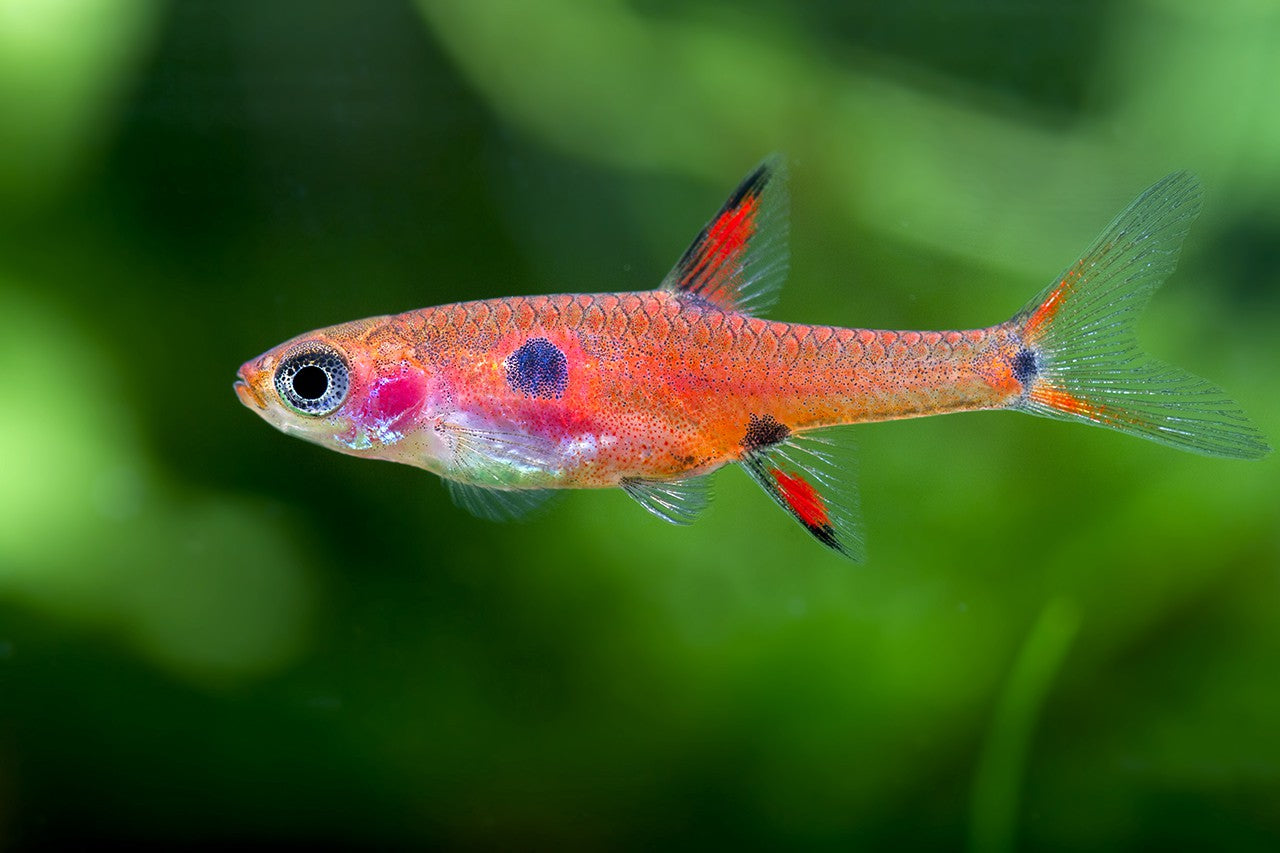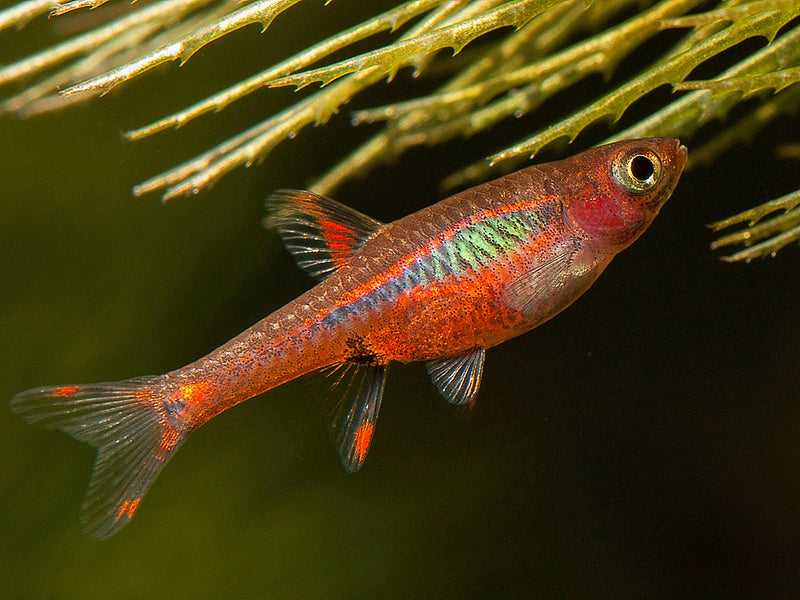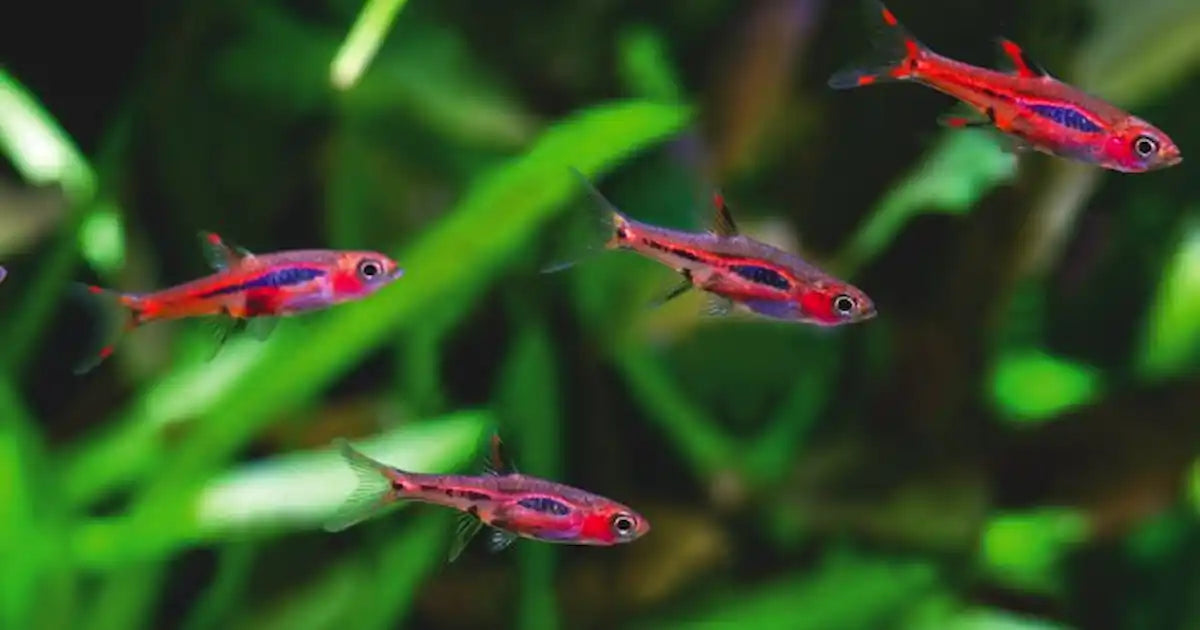Boraras Rasbora (Micro Rasbora) – Boraras spp. - Live Fish
Boraras Rasbora (Micro Rasbora) – Boraras spp. - Live Fish
Total items
Product subtotal
Detailed Description
Detailed Description
The Boraras Rasbora is a genus of small, peaceful fish native to the tropical freshwater rivers and streams of Southeast Asia, including regions in Malaysia, Indonesia, and Thailand. Known for their vibrant colors and miniature size, these fish are often favored by aquarists who maintain nano aquariums or who enjoy keeping small, colorful schooling species. Boraras Rasboras are an excellent choice for community tanks, as they are non-aggressive, low-maintenance, and very active.
🐠 Appearance:
-
Size: Boraras Rasboras are among the smallest fish available in the aquarium hobby, typically growing to only 1 inch (2.5 cm) in length, with some species being slightly smaller.
-
Coloration:
-
Most species in the Boraras genus display vibrant hues such as red, orange, and yellow, particularly when in good health and well-fed.
-
The Boraras brigittae (commonly called the Chili Rasbora) is especially well-known for its bright red body, with a contrasting black line running horizontally along the body, often accompanied by black fins.
-
The Boraras merah has a more orange coloration, while other species may display subtle patterns, like spots or stripes.
-
The fin structure is delicate and small, with slightly pointed dorsal fins and long, flowing tail fins.
-
🌿 Tank Requirements:
-
Tank Size: Despite their small size, Boraras Rasboras are best kept in groups of at least 6–10 individuals. A minimum of 10 gallons is recommended for a small school, but larger tanks will help create a more stable environment.
-
Water Parameters:
-
Temperature: 72–80°F (22–27°C)
-
pH: 6.0–7.5 (slightly acidic to neutral)
-
Water Hardness: Soft to moderately hard
-
-
Environment:
-
Planted tanks with lots of dense vegetation are ideal, as they mimic the fish's natural habitats, which include slow-moving streams and rivers with lots of cover.
-
A fine substrate, such as sand or small gravel, is preferable, and these fish enjoy grazing on biofilm and algae on surfaces.
-
Dim lighting and gentle water flow will help mimic their natural environment, as they thrive in shaded areas with little current.
-
Include small rocks, driftwood, and floating plants to provide additional hiding spots.
-
🏡 Behavior & Compatibility:
-
Temperament: Boraras Rasboras are peaceful, shy, and non-aggressive fish. They do best in schools, where they feel safer and more comfortable.
-
Tankmates:
-
These fish are excellent additions to community tanks, as long as they are kept with non-aggressive species.
-
Suitable tankmates include shrimp (such as Amano shrimp or Cherry shrimp), small tetras, gouramis, dwarf cichlids, and other peaceful nano species.
-
Avoid larger, more aggressive fish that may intimidate or prey on these tiny fish.
-
As a schooling species, they will feel most secure in a school of 6 or more Boraras, but a larger group of 10 or more will be even more comfortable.
-
🍤 Diet:
-
Omnivorous: Boraras Rasboras are omnivores and will eat a wide variety of foods in the wild, including algae, small insects, and plant matter.
-
In Captivity:
-
They accept high-quality flake foods, micro pellets, and sinking pellets.
-
Live or frozen foods such as daphnia, brine shrimp, and micro worms can be offered occasionally to encourage natural hunting behaviors and provide nutritional variety.
-
They will also graze on biofilm and algae in the aquarium, helping to keep surfaces clean.
-
🧑🍼 Breeding:
-
Breeding in Captivity: Boraras Rasboras are relatively easy to breed in the right conditions, though they may be a bit tricky for beginners due to their small size and sensitivity.
-
Conditioning the fish with live foods such as daphnia or brine shrimp for a few weeks before breeding can help ensure success.
-
Breeding typically occurs in slightly acidic water with gentle filtration and plenty of floating plants for the female to lay her eggs on.
-
The female will lay several dozen eggs, which will hatch in 1–2 days. After hatching, the larvae will need to be fed very small foods, such as infusoria or liquid fry food.
-
Product features
Product features
Materials and care
Materials and care
Merchandising tips
Merchandising tips
Share






